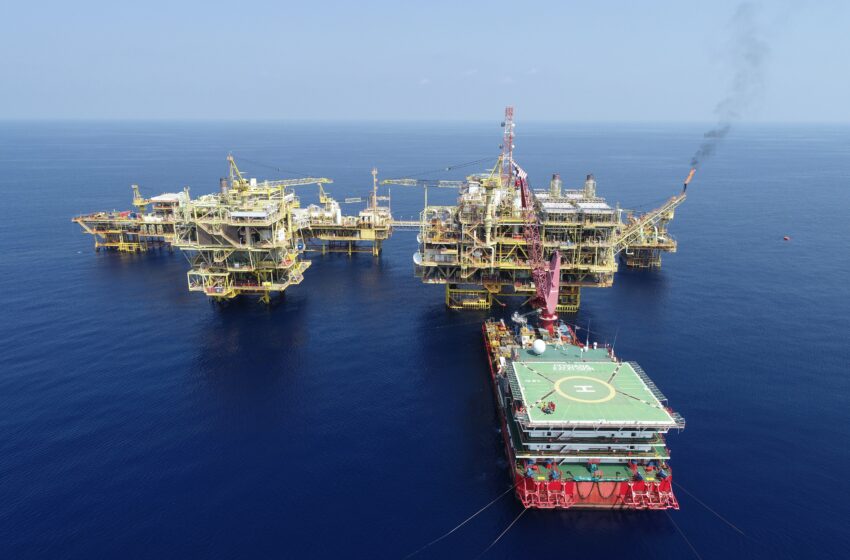
globalbizmag.com
O&G Sector in Malaysia and Indonesia to Grow 4% Between 2024 and 2029
New oil and gas discoveries, coupled with increase in demand is expected to see the sector grow at a Compound Annual Growth Rate (CAGR) of more than 4% from now till 2029 in Indonesia and Malaysia in Southeast Asia.
As part of implementing the Paris Agreement to limit the global warming to 1.5°C, these two nations have drawn up plans to shift from coal to natural gas following vast tracts of oil and gas discoveries in their geographical locations.
In Malaysia, PETRONAS and its Petroleum Arrangement Contractors discovered the reserves in 19 sites contributing over 1 billion barrels of oil equivalent (bboe) of new resources for Malaysia in 2023. This achievement was the result of an intensified exploration programme pursued in the last few years, which saw the drilling of 25 wells; the highest number of exploration wells drilled in a single year since 2015.
More than half of the discoveries were made in the Sarawak Basin, primarily in two clusters within the Balingian and West Luconia geological provinces. Among the notable discoveries are Gedombak-1, Sinsing-1, Machinchang-1 and Mirdanga-1 by PETRONAS Carigali Sdn Bhd (PETRONAS Carigali), along with Babadon-1 and Chenda-1 by Thailand’s PTTEP.
Three discoveries were also made in the Northwest Sabah Basin. Layang-Layang-1 by PETRONAS Carigali, as well as Hikmat-1 and Dermawan-1 by PTTEP proved a working petroleum system that unravels new opportunities in the ultra-deepwater and deepwater areas. Another drilling campaign is ongoing within the same proven basin in the shallow waters off the coast of Sabah.
Two other discoveries were made within the Malay Basin. Hibiscus Oil & Gas Malaysia found gas in Bunga Lavatera-1 well nearby the PM3 hub, and brought it onstream with a flowrate of about 50mmscf per day within the same year. PTTEP found oil and gas in Simpoh Beludu-1, having penetrated the hydrocarbon-filled reservoir in the deeper Group K sands.
Coming to Indonesia, Italian energy group Eni discovered gas reserves in the Geng North-1 exploration well drilled in the North Ganal PSC, about 85 km off the coast of East Kalimantan. An estimated 5 trillion cubic feet (tcf) of gas, equal to about 140 billion cubic metres, with an estimated condensate content up to 400 million barrels, was discovered at the site.

Transition Most Pronounced
According to Energy Council, the shift from coal to natural gas is most pronounced in Malaysia and Indonesia, where recent major upstream discoveries have not only renewed interest and investment but have also marked a resurgence in these nations’ commitment to the oil and gas industries.
These developments, emerging from a period of reticence after the 2015 oil price downturn, are pivotal as they not only promise to enhance regional energy security but also to catalyse economic growth across Southeast Asia.
“The oil and gas sector in Malaysia is undergoing a transformative phase to bolster exploration and production activities. This resurgence is exemplified by TotalEnergies acquiring a significant stake in SapuraOMV and Chevron expanding its footprint by acquiring Hess (including their Malaysian assets),” Energy Council said.
Furthermore, PETRONAS is spearheading this renewed focus with its Malaysia Bid Round 2024 (MBR 2024), where it introduced new exploration blocks and clusters of Discovered Resource Opportunities (DRO), all under the rallying theme of “Transforming Your Future with Advantaged Energy.” This strategic initiative aims to solidify Malaysia’s reputation as an attractive destination for energy investments, drawing substantial capital and fostering extensive international collaborations. These efforts are aligned with national objectives to ensure energy security.
In Indonesia, plans are underway to offer new exploration blocks in the North Sumatra basin by mid-2024, with a focus on tapping into unconventional resources. This move is complemented by substantial revisions to the Oil and Gas Law and the implementation of investor-friendly fiscal policies, aiming to streamline the investment process, Energy Council said.
Moreover, Indonesia has ramped up its drilling activities, planning to drill about 40 wells this year—a notable increase from the 20 drilled during the peak of the pandemic. These activities are supported by successful bidding rounds and are integral to Indonesia’s strategy to balance energy production with economic growth and environmental sustainability.
“The enhancement of production-sharing contract terms and the introduction of regulatory reforms are crafted to spur the development of new, large-scale oil and gas projects, thus aligning with the broader strategy to balance energy production, economic growth, and environmental sustainability,” Energy Council said.











